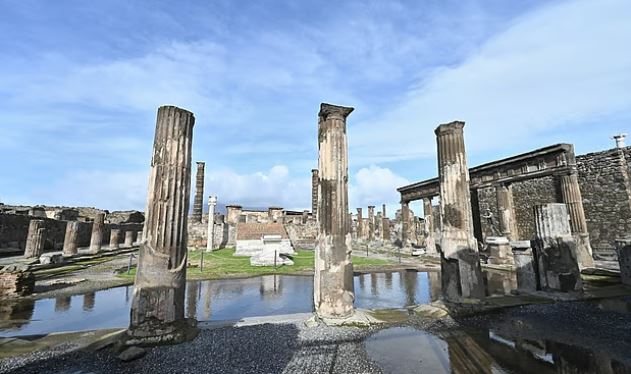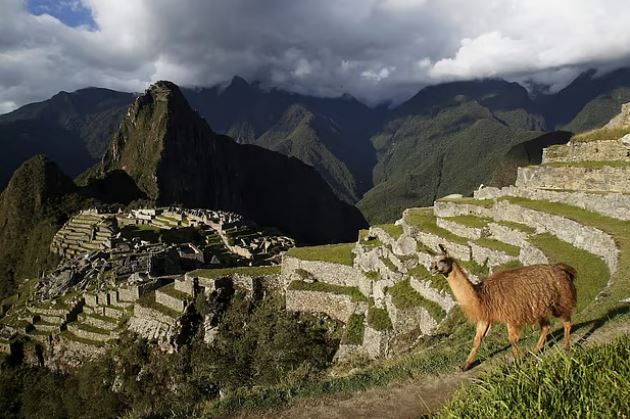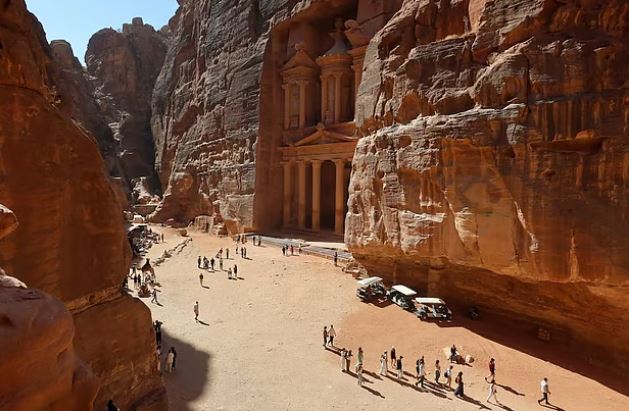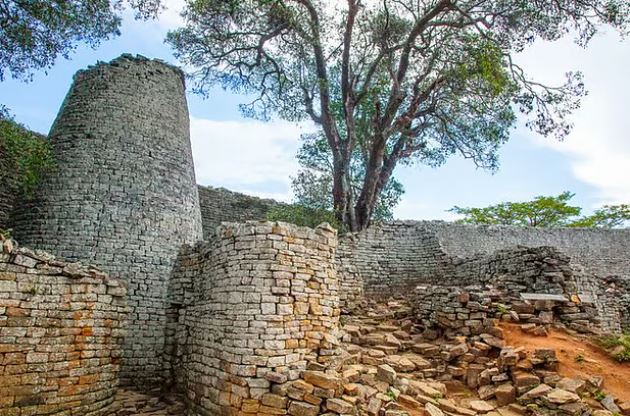Time is a restless artist and destroyer. Just as vast civilizations are built under its touch, hundreds of cities disappear under its flow. There are many cities hidden in the world that were once the centers of knowledge, science, trade and culture, but today they have become nothing more than silent ruins. These lost cities are not just piles of bricks and stones, but they are a living document of the rise and fall of human history. Explore these 10 lost cities of the world, where human ingenuity once flourished—and then disappeared from sight.
1. Pompeii, Italy: The City Lost in Volcanic Ash

Location: Naples, Italy
Civilization: Roman
Period: Approximately 7th century BC – 79 AD
Pompeii, located in the Campania region of Italy, at the foot of Mount Vesuvius, was a vibrant and prosperous Roman city. Its inhabitants were accustomed to industry, commerce, and a life of luxury. Decorated with a forum, amphitheater, public baths, and temples to numerous gods and goddesses, the city was a symbol of Roman aristocracy.
- Cause of the collapse: On a fateful day in 79 AD, Mount Vesuvius erupted violently. Within hours, the entire city was buried alive under a 20-foot-high column of lava and ash. Thousands of people and animals were instantly turned to stone, covered in hot gases and ash. The people of Pompeii had no chance of escaping this terrible wrath of nature.
- The story of the discovery: After almost 1,700 years of oblivion, the ruins of this city were accidentally discovered during excavations in 1748. The thick layer of ash preserved the city in an incredible way. Archaeologists have been able to recreate that horrific moment by making plaster casts of the houses, streets, and even the hollowed-out bodies of people trapped in the ash. Pompeii is today a UNESCO World Heritage Site and a thrilling window into the past.
2. Machu Picchu, Peru: The Inca’s Secret Refuge in the Clouds

Location: Cuzco, Peru
Civilization: Inca
Date: Approx. 1450 – 1572 AD
A city hidden in the clouds at an altitude of about 8,000 feet above sea level, on the summit of the Andes Mountains, Machu Picchu is a city that is hidden behind the clouds. The most famous and well-preserved monument of the Inca civilization is a mystery as to why it was built. Many believe it was a secret retreat for the Inca emperor Pachacuti or a sacred religious site.
- Lifestyle and Architecture: The stone architecture here is incredible. The huge stones are fitted together so perfectly without any mortar that it is impossible to insert a needle between them. The Temple of the Sun and the Intihuatana stone demonstrate the extraordinary astronomical and engineering skills of the Incas. The inhabitants of this place farmed on the slopes of the mountains, which is evidence of their advanced agricultural system.
- Cause of collapse: The exact cause of the collapse of Machu Picchu is still unknown. The most popular theory is that the population rapidly decreased due to a smallpox-like epidemic caused by the arrival of the Spanish and the city was abandoned. Since the city was located in a very remote location, the Spanish conquistadors did not find it, which saved it from destruction.
- Discovery story: In 1911, American historian Hiram Bingham, with the help of locals, introduced the city to the world. Today, Machu Picchu is one of the New Seven Wonders of the World and a dream destination for tourists.
3. Petra, Jordan: Desert City of Pink Stone

Location: Mand Province, Jordan
Civilization: Nabataean
Date: Approx. 400 BC – 106 AD
Petra, known as the “Pink City“, is a magical city carved into the Jordanian desert by a rock. It was the capital of the Arab Nabataeans, who were highly skilled traders and engineers. Petra was rich in wealth as it was located on an important spice and silk trade route from India, Arabia and Egypt to Europe.
- Architecture and Culture: The most amazing aspect of Petra is its architecture. Most of the buildings, tombs and temples here are carved directly into the sandstone cliffs. The most famous of these is ‘Al-Khazneh’ or ‘Treasury’, which was carved out of a solid rock. There is also a large theater and numerous tombs, which bear witness to the advanced art and culture of the Nabataeans. They created a complex system to store water in the desert.
- Reason for the collapse: A devastating earthquake in 363 AD caused extensive damage to the city. In addition, Petra’s economic importance gradually declined as the Romans discovered new trade routes. Over time, the city was abandoned and became a forgotten chapter for the rest of the world except for the Bedouins.
- Discovery story: In 1812, Swiss traveler Johann Ludwig Burckhardt rediscovered this lost city under the guise of an Arab scholar. Today, it is a UNESCO World Heritage Site and Jordan’s most valuable asset.
4. Angkor, Cambodia: The House of the Gods Hidden in the Jungle
Location: Siem Reap, Cambodia
Civilization: Khmer
Period: 9th – 15th century
Hiding deep in the jungles of Cambodia, Angkor was the largest pre-industrial city in the world. It was the capital of the powerful Khmer Empire and covered an area of about 1,000 square kilometers. This vast city was dotted with numerous temples, the most famous of which is Angkor Wat.
- Lifestyle and Religion: Angkor was a huge metropolis, home to about a million people. Their lifestyle was centered on agriculture and fishing. The rulers here first converted to Hinduism and later to Buddhism. The stories of the Ramayana and Mahabharata and scenes of the ‘Chilling of the Sea’ carved on the walls of Angkor Wat testify to the extraordinary skill of Khmer artists.
- Reasons for the Fall: There are several reasons behind the fall of Angkor. Climate change, chronic droughts, and floods have destroyed their complex water management systems. In addition, constant warfare with neighboring kingdoms and economic decline have accelerated its decline. By the 15th century, the vast city was abandoned and gradually lost to the jungle.
- Discovery Story: Although locals knew of its existence, Angkor came to the attention of the Western world in the 19th century through the writings of French naturalist Henri Mouot. Today, Angkor Wat is an integral part of Cambodia’s national flag and identity.
5. Mohenjo-daro, Pakistan: Planned City of the Indus Valley Civilization
Location: Sindh Province, Pakistan
Civilization: Indus Valley Civilization
Period: Approximately 2600–1900 BC
Known as the “Stupa of the Dead,” Mohenjo-daro was one of the largest and most advanced cities of the Indus Valley Civilization, dating back about 4,500 years. This Bronze Age city is still a marvel to archaeologists for its modern urban planning, advanced sewage system and social structure.
- Urban planning and life: Mohenjo-daro’s streets were laid out in a grid pattern, reminiscent of modern urban planning. The houses made of burnt bricks had their own baths and wells. The ‘Great Bath’ or huge bathhouse located in the center of the city was probably used for religious or social ceremonies. They had their own writing system (Indus script), but it has not been deciphered to this day.
- Reasons for the fall: The reasons for the fall of Mohenjo-daro are debated. Some theories include the changing course of the Indus River, the destruction of agriculture due to climate change, and the invasion of outsiders such as the Aryans. However, it is difficult to attribute any specific cause to its fall.
- Discovery Story: In 1922, archaeologist Rakhaldas Bandyopadhyay of the Archaeological Survey of India discovered the ruins of this city. The discovery of Mohenjo-daro completely changed our understanding of the history of South Asia.
6. Tikal, Guatemala: Heart of the Maya Civilization
Location: Petén Basin, Guatemala
Civilization: Maya
Period: Approximately 6th century BC – 10th century AD
Located deep in the tropical jungle of Guatemala, Tikal was one of the most powerful states of the Maya civilization and a vast metropolis. Its towering pyramids and temples rise above the jungle canopy, symbolizing the might and power of the Maya civilization.
- Architecture and Society: Tikal’s population is estimated to have been around 90,000 at its peak. The tallest pyramid here, Temple IV, is about 70 meters high. The Mayans were very skilled in astronomy and mathematics. Their calendar was incredibly accurate. They wrote in a complex hieroglyphic script.
- Reason for the fall: Tikal fell under mysterious circumstances in the late 9th century. Archaeologists believe that a combination of prolonged warfare, population growth, lack of resources, and severe drought led to the decline of this great city. People gradually left the city and Tikal disappeared into the deep jungle.
- Discovery story: In the 19th century, explorers discovered the ruins of this city. Today, Tikal is a UNESCO World Heritage Site and an important center for understanding the greatness of the Maya civilization.
7. Catalhoyuk, Turkey: One of the World’s First Cities
Location: Konya, Turkey
Civilization: Neolithic
Date: Approximately 7500 – 5700 BC
Located on the Anatolian Plateau in Turkey, Catalhoyuk is considered one of the oldest cities in the world. Established around 9,500 years ago, this settlement has changed our understanding of prehistoric human society.
- Lifestyle and Architecture: Catalhoyuk’s architecture was unique. There were no streets. The houses were built in a honeycomb pattern with entrances on the roofs. People used ladders to climb to the roofs to enter their homes. The inhabitants were mainly farmers and are believed to have lived in an egalitarian society. The paintings of hunting and various geometric figures on the walls of the houses indicate their advanced sense of art.
- Reason for decline: After surviving for almost two thousand years, Catalhoyuk was abandoned. The exact cause is unknown, but climate change and resource scarcity are likely factors.
8. Great Zimbabwe, Zimbabwe: Africa’s Rock Fortress

Location: Masvingo Province, Zimbabwe
Civilization: Shona people
Date: 11th–15th century
Located south of the Sahara Desert, Great Zimbabwe was the capital of a powerful and prosperous African kingdom in the Middle Ages. Its massive stone walls and structures were built without any mortar, which testifies to the extraordinary skill of the local Shona architects.
- Trade and Power: Great Zimbabwe was an important center for the trade of gold, ivory, and other goods. Its rulers acquired immense wealth by trading with coastal cities. The circular wall called the ‘Great Enclosure’ and the ‘Hill Complex’ are the most important structures here, which were probably used as a royal residence and religious center.
- Reasons for decline: The city began to decline in the 15th century. Due to changing trade routes, political instability, and perhaps drought and declining soil fertility, the city declined in importance and was abandoned.
- Discovery Story: European explorers in the colonial era were amazed by these massive ruins and could not believe that they were built by native Africans. But modern archaeology has proven that they were entirely the creation of a native African civilization.
9. Thonis-Heraklion, Egypt: A Sunken City in the Nile
Location: Abu Kir Bay, Egypt
Civilization: Ancient Egyptian and Greek
Date: Approx. 12th century BC – 8th century AD
Once a legend, Thonis-Heraklion is now a fact. Before the founding of Alexandria, it was Egypt’s main port and gateway to Mediterranean trade. Named after the Greek hero Herakles, the city sank into the sea about 1,200 years ago.
- Cause of collapse: Natural disasters such as earthquakes and tsunamis gradually softened the city’s soil and eventually completely submerged it in the depths of the Nile Delta. Over time, it disappeared from human memory and became a mythical city.
- Discovery story: In 2000, French marine archaeologist Franck Godio and his team found the ruins of this city 30 feet below the sea after a long search. Colossal statues, temple ruins, gold coins and numerous ships were recovered from the water, which tell the story of a prosperous civilization. The discovery of Thonis-Heraklion is considered one of the greatest archaeological discoveries of the 20th century.
10. Skara Brae, Scotland: Preserved Stone Age Village
Location: Orkney Islands, Scotland
Civilization: Neolithic
Date: Approximately 3100 – 2500 BC
Older than the Egyptian pyramids and Stonehenge, Skara Brae is the best-preserved Neolithic village in Northern Europe. Built around 5,000 years ago, this settlement gives us an incredible insight into the daily lives of Stone Age people.
- Lifestyle and architecture: The houses here are built partly underground and are connected to each other by stone paths. Each house has a bed, cupboard and oven made of stone. Their livelihood was mainly based on agriculture, animal husbandry and fishing.
- Reason for collapse: Why this village was abandoned is a mystery. The most popular theory is that a terrible storm buried the village under sand, which preserved it for thousands of years.
- Discovery story: The village was discovered in 1850 when a massive sea storm washed away the sand. Skara Brae is also known as the “Scottish Pompeii” and shows us how organized and creative people were thousands of years ago.
FAQs about 10 lost cities of the world
Question: What exactly is a lost city?
Answer: A lost city is a historical settlement that was once economically, culturally or politically important but was completely abandoned due to war, natural disaster, economic collapse or climate change, and over time its existence faded from the knowledge or memory of the general public.
Question: What kind of technology is used to discover these cities?
Answer: In addition to ancient documents and folklore, modern technology has revolutionized these discoveries. These include satellite photography, which detects unusual features on the surface; LiDAR technology, which uses lasers to create three-dimensional maps of structures hidden under the forest; and magnetometers and ground-penetrating radars, which can detect underground structures. Side-scan sonar is used in marine archaeology.
Question: Why is it important to preserve these lost cities?
Answer: These cities are invaluable heritage of human civilization. They provide a direct insight into the lifestyle, knowledge, beliefs, art, and social structures of our ancestors. By analyzing the reasons for their rise and fall, we can learn valuable lessons for the present and the future. For example, these cities teach us how climate change or overuse of resources can push a civilization towards destruction.
Discovery story: British archaeologist James Mallart discovered the site in 1958. Catalhauq shows us how human society transitioned from a hunter-gatherer lifestyle to settled agricultural settlements.
Question: Can ordinary tourists visit these places?
Answer: Yes, most of the 10 cities mentioned are now famous tourist destinations and UNESCO World Heritage Sites. They are open to tourists, but strict rules must be followed to protect these fragile historical sites. Some places, such as Thonis-Heraklion, are not accessible to the public because they are under the sea, but their recovered artifacts are displayed in museums.
Conclusion
Standing among the ruins of these lost cities, we not only appreciate the vastness of the past, but also witness the fragility of human civilization in the face of the inexorable flow of time. From the frozen moment of Pompeii to the mystery hidden behind the clouds of Machu Picchu, each city tells a unique story.
These stories teach us how small we are in the face of nature and time, and at the same time how limitless human creativity, adaptability, and knowledge can be. These forgotten cities are silent witnesses to history, inspiring and warning us from generation to generation.

Hi, I’m M Saif, a digital marketer with a strong focus on SEO and content writing. I help businesses improve their online visibility, drive organic traffic, and create engaging content that converts. With a results-driven approach, I work on strategies that not only boost rankings but also deliver real value to audiences.











Leave a Reply